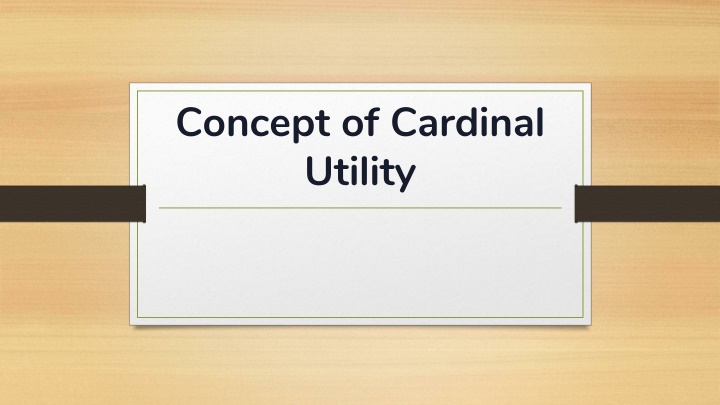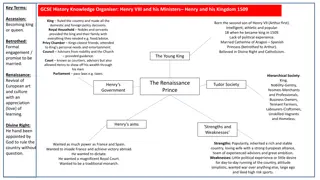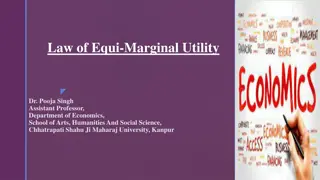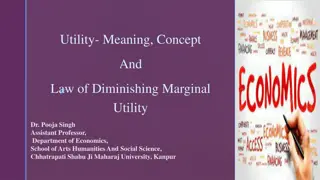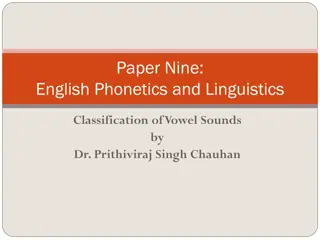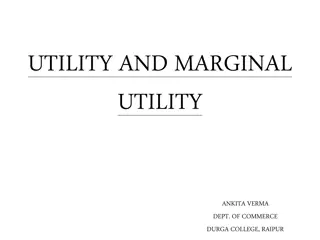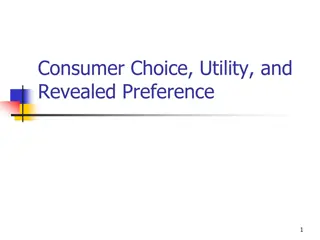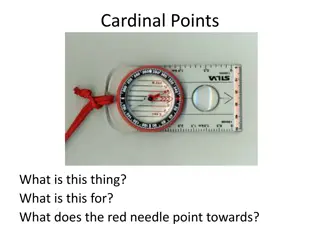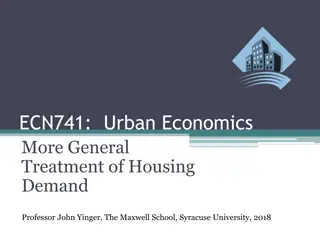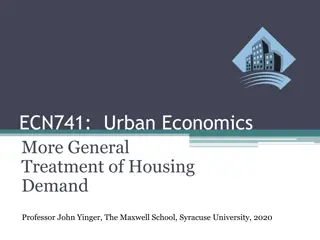Cardinal Utility Analysis in Economics
Cardinal utility in economics refers to measuring satisfaction numerically, focusing on diminishing marginal utility and rational consumption. Assumptions include limited resources, additivity of utility, and constant marginal utility of money. Three types of utility are discussed: total, marginal, and average.
Download Presentation

Please find below an Image/Link to download the presentation.
The content on the website is provided AS IS for your information and personal use only. It may not be sold, licensed, or shared on other websites without obtaining consent from the author.If you encounter any issues during the download, it is possible that the publisher has removed the file from their server.
You are allowed to download the files provided on this website for personal or commercial use, subject to the condition that they are used lawfully. All files are the property of their respective owners.
The content on the website is provided AS IS for your information and personal use only. It may not be sold, licensed, or shared on other websites without obtaining consent from the author.
E N D
Presentation Transcript
Concept of Cardinal Utility
The utility may be defined as the power of commodity or services which satisfy the human wants. It has nothing to do with usefulness or harmfulness but simply refers to wheather the goods & services satisfy human beings or not. In economics the goods whether they are useful or not posses utility which can satisfy human wants.
Concept of Cardinal Utility: Cardinal utility is also called traditional approach of utility analysis. According to this approach, utility can be measured in numbers. It means level of satisfaction of a consumer can be assigned in numbers. Law of satisfaction of a consumer can be assigned in numbers. Law of diminishing, Marginal utility & law os substitution are the popular theories developed by using the concept of cardinal utility.
Assumption of Cardinal Unity 1. Rationality: The consumer should be rational about consuming goods & services & try to maximize satisfaction from available limited resources. 2. Cardinal Measurement of Utility: Under this approach, the utility is measured cardinally. Hence, the satisfaction that consumers gets can be numerically valued. 3. Diminishing Marginal Utility: If the consumers consume the successive units of a commodity one after another the utility declines. Hence, the satisfaction which is derived from the consumption of an extra unit of a commodity declines.
Assumption of Cardinal Unity 4. Budget Constraint: It is assumed that consumer has a limited money income to spend on goods & services. 5. Utility is Additive: It is assumed that utilities are additive as shown below: TU = U(n1) + U(n2) + U(n3) + ..... + U(nn). 6. Constant Marginal Utility of Money: It is assumed that the marginal utility of money remains constant. An increase or decrease in income of the consumer doesn't change the marginal utility of money.
There are three types of utility: 1.Total utility 2.Marginal utility 3.Average utility
1) Total utility Total utility which a consumer obtains by consuming all units of a commodity in certain time period is known as total utility. If a consumer consumes n units of commodity, total utility can be expressed as : TU = (MU1+ MU2+ ............ MUn) Where, TU = Total utility MU1+ MU2+ ............ MUnare the marginal utilities derived from 1stunit, 2ndunit, ...... nthunit respectively.
2) Marginal utility The utility which a consumer obtains by the consuming extra units of the commodity is known as marginal utility. In other words, marginal utility is change in total utility due to change in total utility due to change in unit of consumption of the commodity. Symbolically, MU = TU/ Q Where, MU = Marginal Utility TU = Total Utility = Change Q = Unit of commodity
3) Average Utility: The satisfaction joined by the consumer from per unit commodity consumed is called average utility. It is also defined as total utility divided by units of the commodity consumed. Symbolically, AU= TU / Q Where, AU = Average Utility TU = Total Utility Q = Unit of commodity
Law Utility (DMU) of Diminishing Marginal The Law of Diminishing Marginal Utility (DMU) can be used to explain consumers equilibrium in case of a single commodity. Therefore, all the assumptions of Law of DMU are taken as assumptions of consumer's equilibrium in case of single commodity. A consumer purchasing a single commodity will be at equilibrium, when he is buying such a quantity of that commodity which gives him maximum satisfaction. The number of units to be consumed of the given commodity by a consumer depends 1. Price of the 2. Expected utility from To determine the equilibrium point, consumer compare the price of the given commodity with its utility. Being a rational consumer, he will be at equilibrium when marginal utility is equal to price paid for the commodity. on 2 factors. given commodity. each successive unit.
